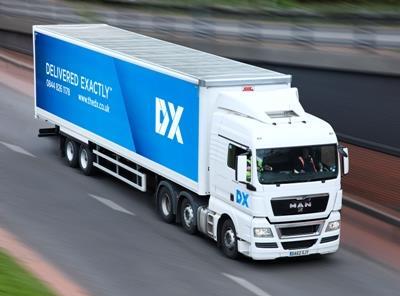
While it didn’t start so, the UK’s divisive EU referendum vote dominated the middle of the year onwards and much like the general public, appeared to split Motortransport.co.uk readers. For some it represented the chance to escape the red-tape generated by Brussels, ditch measures such as Driver CPC and stop a race to the bottom, while making the UK great again.
For others, it threatened the return of customs clearance and UK land borders, a labour shortage and an economic drag fuelled by uncertainty. But as dominant as it was there were plenty of other themes to chew over in 2016.
All-lanes lead where?
Whether or not all-lane running road systems should be rolled out across the UK has been a point of contention between the DfT and Transport Committee this year.
In a report released in June, the select committee criticised Highways England’s decision to roll out all-lane running systems to 300 miles of motorway. It criticised the move for being a cost-cutting scheme that put road users in danger with the removal of hard shoulders.
The report added that while the motorways do have emergency refuge areas, they are neither frequent nor long enough, especially for an HGV to re-join the road or be recovered from.
Rob Flello MP, chairman of the All-Party Parliamentary Group on Road Freight and a Transport Committee member, said the government was taking “a massive risk” and that all-lane running “looks like a cheap option in financial terms but will end up being disastrously costly in lost lives”.
However Highways England argued that the roads were “demonstrably as safe as a standard motorway.
While there may well be more on this debate in the coming year, one area both parties have agreed on is that there should be tougher penalties for road users not compliant with red x signs signalling lane closures. Therefore police are to be given new powers to issue fixed penalty notices to non-compliant parties.
Money, money, money
2016 saw the traffic commissioners (TCs) renew their calls for more funding from the DfT.
But with senior TC Beverley Bell (pictured right) suggesting that larger fleets should pay more for their O-licence to help alleviate the pressure, many operators could find themselves paying more for the service they require in order to keep their businesses on the road.
In her annual report for 2015/16, Bell questioned the suitability of the current one-size-fits-all fee structure. Under the current scheme a large 3PL with 200 trucks will pay the same for its O-licence as a sole trader with one truck, and Bell suggested that as the 25 largest 3PLs have a combined pre-tax profit of £975m they could well afford to pay more.
Bell suggested that the fees operators pay should be reformed, particularly as the TCs received £12.4m in revenue from the O-licensing scheme in 2015/16, down from £12.5m the previous year.
If the DfT does proceed with Bell’s suggested changes, it would not necessarily happen overnight. O-licence fee reform would most likely be subject to consultation with the industry and it may take some years for this to take place.
With Bell due to step down from her position in the spring, it looks like her successor will have plenty to consider when he or she picks up the mantle.
Driving force
Having filled the pages of Motortransport.co.uk with many a stark warning of the impending driver shortage for the past few years, it was arguably 2016 where we saw it finally bite.

Results published by big names such as Currie European, Elddis Transport, Lenham Storage, Maxi Haulage, Expect Distribution and Jack Richards & Son all laid bare the cost to their businesses of the shortage – namely a reliance on agency drivers to plug the gap cost them more and reduced profit.
DX Group (pictured left) spelt it out at the start of the year stating the shortage had been so acute it had parked up 7.5-tonne vehicles to “cover them with Sprinters, which adds cost to the business”.
While telling the industry arguably nothing it didn’t already known, the Transport Committee stated in July that current efforts to resolve the driver shortage would not be enough. With 40,000 drivers expected to leave the industry by the end of this year (many retiring), a current shortfall of 45,000 and the RHA predicting there is currently 60,000 drivers from the European Economic Area working within UK logistics, this year’s Trailblazer Apprenticeships need to deliver.













